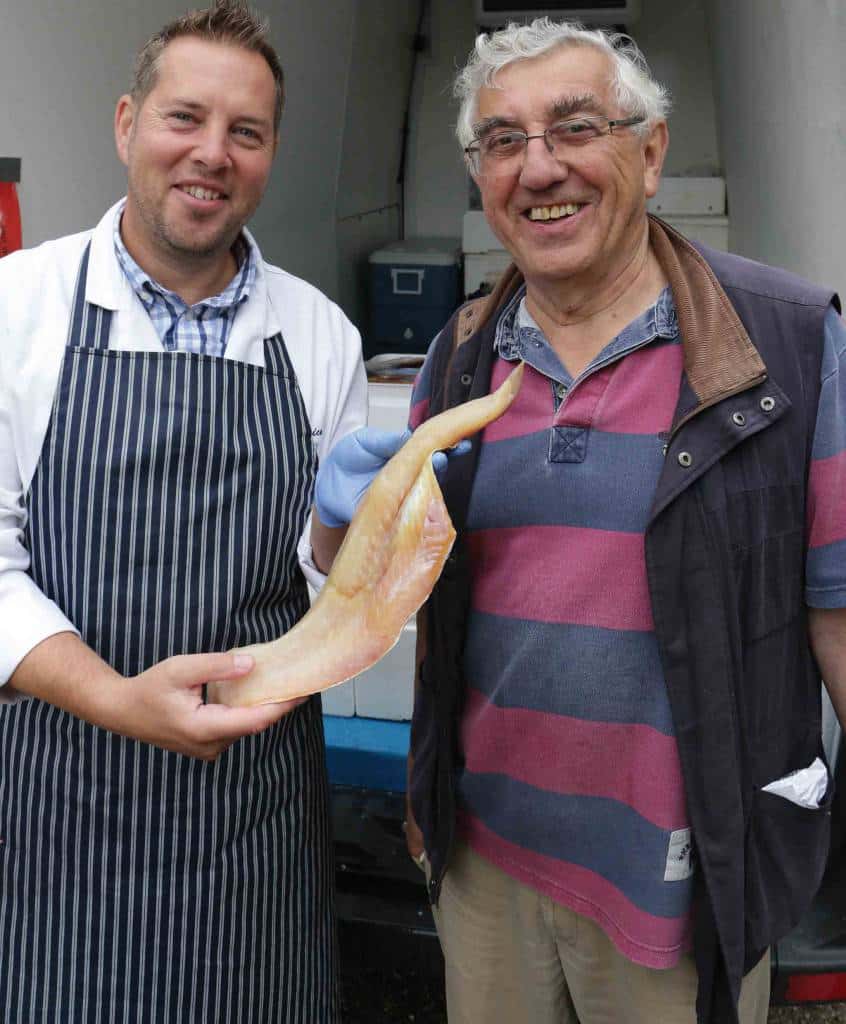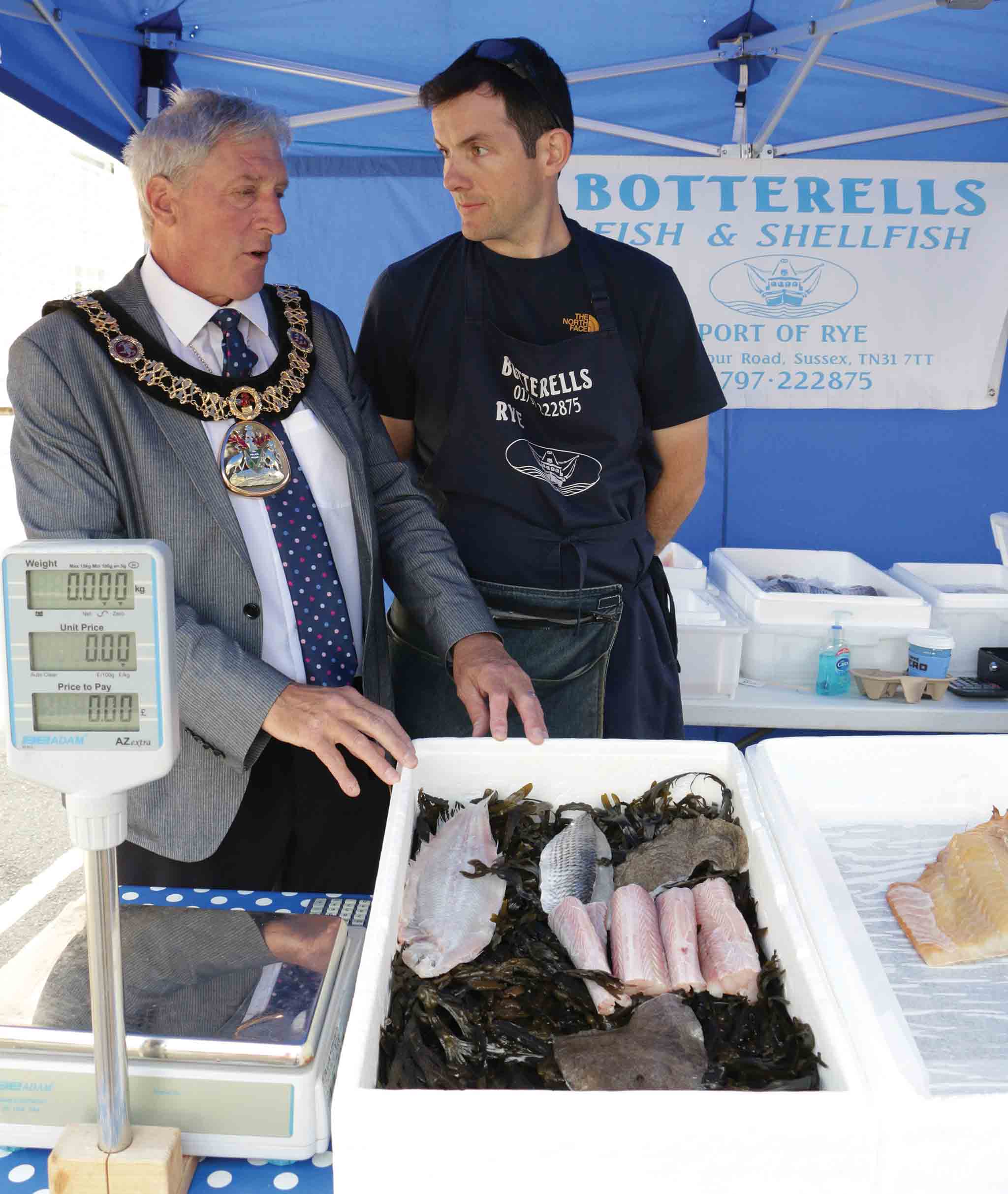Arrive at a farmers’ market first thing in the morning and the stall attracting the biggest queue will most likely be the fishmonger. The early shoppers will have been hooked in to see what the catch of the day is, and to pick up cooking tips for making dinner for family and friends.
However, some customers cross to the other side of the market, to avoid getting too close to ‘fishy’ things.
That’s a shame, because your fishmonger will take the mystery away from preparing and cooking fish with a few gentle pointers and words of advice.
With oddly-shaped bodies, and light flashing off the iridescent scales, fish laid out in eye-catching displays on beds of gleaming ice suggest a visit to the fishmonger is a must.
With over 5,000 miles of coastline, we British should be eating more fish, and with so many varieties of seafood to choose from – such as plaice, bass, mackerel, lemon sole, gurnard, cod, huss and dressed crabs -there’s something to appeal to everyone.
Your market fishmonger will offer tips on how to fillet and prepare your fish, and may even provide a recipe card for inspiration. Fish are very versatile and can be fried, grilled, poached or baked.
Catches of cod, pollock, sea bream and trout are very nutritious foods and work in many dishes, from a simple pie or steamed with some lemon and dill to adding bite to a spicy Indian curry, spiced up with a large pinch of cumin or a teaspoon of turmeric.
Mike Janney of Mikey’s Plaice sells fresh catch from his blue and white van at Hildenborough and Shipbourne Farmers’ Markets and says customers love the idea of buying fresh, top quality fish and shellfish out of the water that morning, or just a day earlier.
“The choice available at farmers’ markets is far wider and more interesting than you’ll get at a supermarket,” he says. “And it’s great to have a chat and a bit of banter with my customers about what’s in season, and offer tips about preparing and cooking the fish,” he adds.

Bob Taylor, Vice-Chairman of the Kent Farmers’ Market Association, and Market Manager at Shipbourne, says: “It’s great to have good quality fresh fish available to buy at the market. It’s good value and they have a great choice on offer.”
One of Bob’s favourite fish dishes to cook at home is a baked white fish, such as cod or halibut, with a crunchy, breadcrumb topping with olives and herbs.
Fishermen from the southern ports of Rye, Hastings and the east Kent ports of Whitstable (famous for its local oysters), Ramsgate and Folkestone send the catch across the region’s farmers’ markets as well as into London and across Europe.
Many are family-owned businesses, such as Arcade Fisheries of Hastings and Botterells of Rye.
Paul Saxby, of Arcade, is a familiar face at the Tunbridge Wells, Pantiles and Penshurst Place Farmers’ Markets.
“Brill, turbot and pollock are available all the time while others, including herring and cod, are landed in the ‘winter fishery’ months between November and March,” says Paul.
Other fish to look out for at this time of year, and heading towards December, include squid, sea trout, turbot and plaice.
Like most fishmongers, Paul is happy to share recipe ideas and often suggests customers try something new – perhaps a sea bream or smoked trout.
Matthew Sankey, owner a Tunbridge Wells fish restaurant, champagne and seafood bar and fishmonger, says:
“Seafood Week is a great way to encourage people to try eating more fish. Customers come into our fishmonger looking to be inspired. They see TV chefs using John Dory, turbot or mullet and want to try them at home.
“And although we do stock the popular favourites, such as cod and salmon, we like to introduce a variety of other tasty fish to them.
“For example, a turbot can weigh anything from 500gm to five kilos, which will serve a dinner party of ten and make a great table centrepiece. Or they can buy ten fillets of John Dory for around half the price. It all depends on what their budget is and why they are cooking fish.”
So, next time you’re at the market, don’t cross the street – head for the fishmonger and try something fresh and tasty instead.
HOW TO STORE AND PREPARE FISH AND SHELLFISH
- Put fish in the fridge or freezer when you get home, not in water, making sure that it is covered and wrapped first
- Do not let raw fish or shellfish come into contact with cooked foods
- If you need to thaw frozen fish or shellfish, do so in the fridge overnight, or use the defrost setting on the microwave if you need to do it quickly
- Wash your hands before handling fish or shellfish, and use separate cutting boards, knives, etc, during preparation
- If marinating seafood, do so in the fridge and throw away the marinade after removing the raw fish or shellfish
- Cook the fish so that the fat drips away, and do not use the fish drippings








